You can create more favorable conditions for growing vegetables through the greenhouse and using the method of forming the crown of the plant - tweezers ("removal of ends" from German) or pinching. Experienced gardeners know it, successfully use it in their plots. Pinching is necessary for the formation of a fruiting bush when some shoots of cucumber lashes are carefully cut.
Content
Do I need to pinch cucumbers in a greenhouse
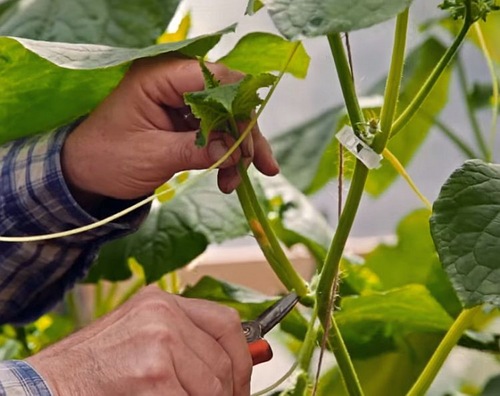
First of all, in order to get delicious cucumbers of beautiful shape, it is necessary to create favorable conditions for the development of the bush. For this, it is watered enough, fed with suitable fertilizers. In the second place, tying, pinching is carried out.
When creating good conditions in the greenhouse, you can get the fruits of cucumbers earlier. To do this, you need to properly equip the room, plant cucumbers, so that the branches do not grow very densely, vertically. For the cultivation of these vegetables, high humidity, frequent watering are necessary. But if the bush grows too much, this will reduce the access of light to the plant, and prevent the formation of fruits. Pinching cucumbers in a greenhouse or in a greenhouse is a mandatory measure.
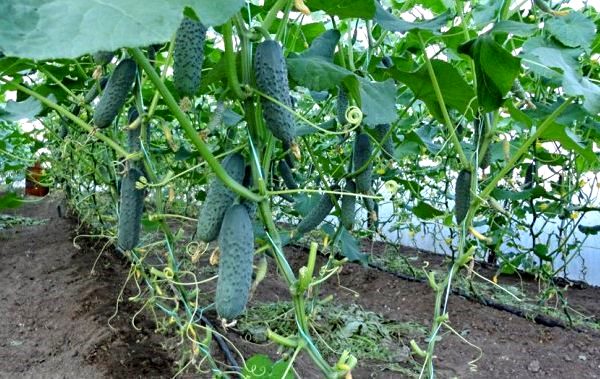 You may be interested in:
You may be interested in:Bushes of cucumbers:
- you need to tie up to grow up;
- gradually form a bush.
With chaotic branching, the formation of ovaries, the root system does not cope with the nutrition of the entire plant, does not bring a plentiful harvest. The cucumbers on the stems will be small, twisted, with bitterness.
One of the gardeners neglects this method, considering it too complicated, useless occupation. But with proper care of the plant, you can get an excellent crop. To understand the rules for caring for cucumbers in a polycarbonate greenhouse, it is recommended to watch the video and drawings.
Pinching rules
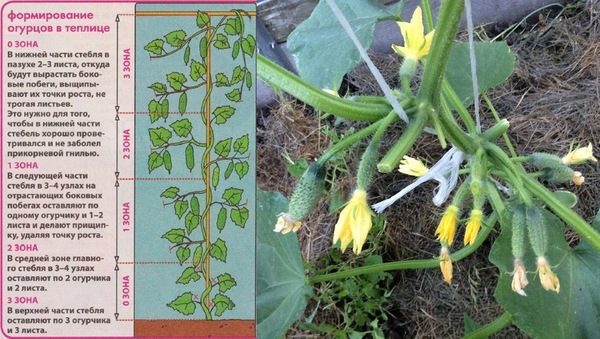
In order to properly pinch cucumbers in a greenhouse, you need to understand the peculiarity of their growth. The stem of a very young plant stands straight, and when it grows, it begins to spread along the ground and reach up, if there is support for which you can catch on the antennae. Side branches extend from the main stem or lash. Shoots also form on the side lashes. The antennae of the plant cling to surrounding objects and the cucumber bush grows up.
The stem has nodes or places where other parts of the plant are attached:
- leaves;
- flowers
- new branches;
- antennae.
Lateral shoots are sometimes very short, embryonic leaves invisible. They will bloom, bear fruit later than the main whip.
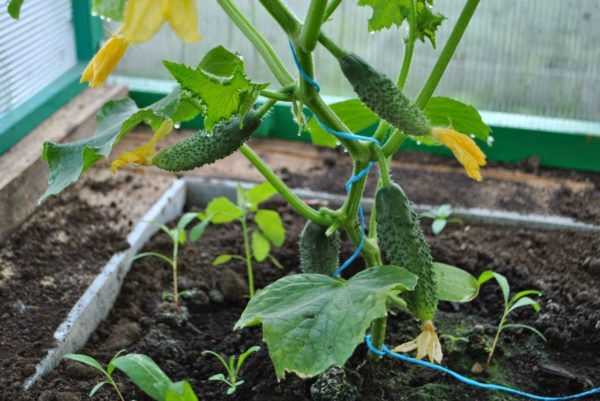 You may be interested in:
You may be interested in:When the plant grows, male and female flowers appear on it. Both types of flowers participate in pollination, but for the formation of fruits, it is female flowers that are needed. In ordinary cucumber varieties, flowers that bring small green cucumbers do not form on the main stem, but on the side, but in the axils of the upper embryonic leaves on the side shoots.
Pinching different varieties of cucumbers
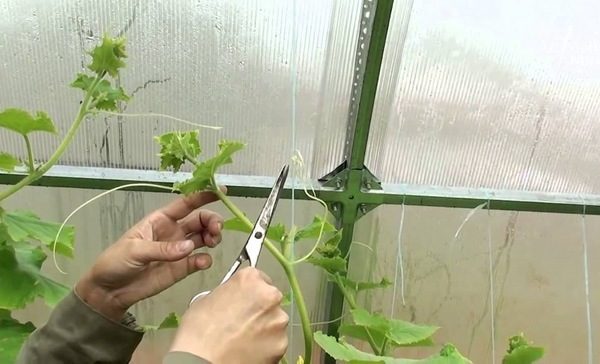 Any sort of cucumber to obtain a crop requires the formation of a bush. Pinching cucumbers in a greenhouse in the area of the main stem contributes to:
Any sort of cucumber to obtain a crop requires the formation of a bush. Pinching cucumbers in a greenhouse in the area of the main stem contributes to:
- active growth of lateral branches;
- the formation of the right ovaries.
Therefore, the first pinching of the plant must be done carefully over the second real leaf, leaving a stump of half a centimeter. After that, branches with female flowers appear on the sides.
The pinch pattern should correspond to the variety of the vegetable plant. The variety may be pollinated by insects or not requiring pollination by them. In the first case, the preservation of male and female flowers is necessary. In the second - men's are not required. In greenhouses, insect access to plants is difficult, therefore, for indoor hotbeds it is recommended to grow a partenocarpic variety of cucumbers that does not require pollination by insects, since this variety is able to form fruits without pollination.
The unique property of parthenocarpic hybrids of cucumbers allows you to grow crops in a greenhouse, where green fruits can form without pollinating insects. Since female hybrids predominate in these hybrids, pinching should be done in a slightly different way:- When the stem of the creeper, mounted on the trellis, is stretched to a height of not less than 50 centimeters, then you can begin the removal at the bottom of all shoots, ovaries, flowers. This will create a blinding zone.
- Above the stem, pinch the side lashes, keeping one ovary, a pair of leaves.
- At a height of 50 cm to 1 meter, in two or four knots, you can leave two ovaries with two or three leaves.
- If the growth of the cucumber stem continues, already at an altitude of more than one and a half meters, you can pinch the area above the third leaf, keeping up to three ovaries.
What varieties do not need pinching
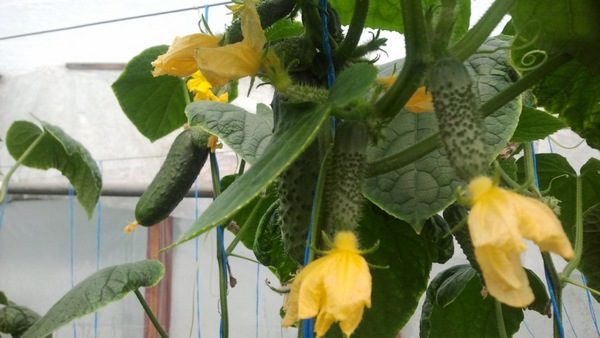 Varieties not requiring pinching can be called cucumbers of a new generation. Their feature is that they grow bushes with short shoots, in the form of a "bouquet". Breeders achieved the desired growth of the lateral branches and fruiting in a peculiar bunch, when several cucumbers are formed from the leaf sinus.
Varieties not requiring pinching can be called cucumbers of a new generation. Their feature is that they grow bushes with short shoots, in the form of a "bouquet". Breeders achieved the desired growth of the lateral branches and fruiting in a peculiar bunch, when several cucumbers are formed from the leaf sinus.
Of the positive properties - the variety is resistant to bad weather conditions. But it costs more, requires knowledge of the features of caring for it. For example, beam cucumbers require more frequent feeding. You do not need to pinch this variety, but you should monitor the growth, and also do not forget to collect ripened fruits in a timely manner.
To obtain an abundant crop of cucumbers, it is recommended to follow several simple rules:
- Plant cucumbers at a sufficient distance from each other to ensure further supply to all branches of the world, nutrition.
- Periodically fertilize the bush, feed it to increase its fruitfulness, and avoid soil depletion.
- Spatulas for vertical creeper growth should be installed in advance, before the formation of lashes.
- Garter should be carried out delicately, trying not to damage the stems, leaves.
- As a support, you can use any rope, twine or wire.
- In the future, garters should be used to separate the main stem, lateral lashes.
- Proceed to the first pinching when the plant strengthens and shoots begin to take shape.
- Landing should not be thick.
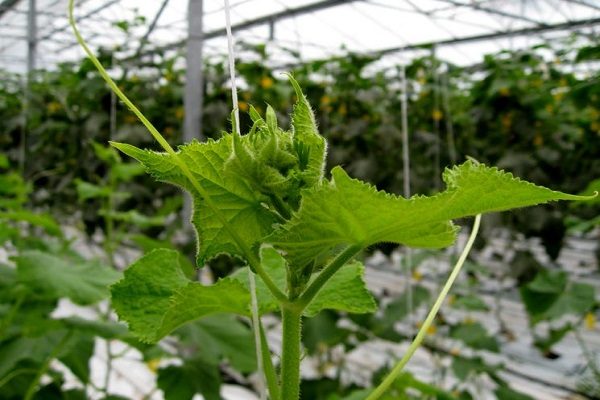
In the second step, carefully cut the stem without damage using special tools or sharp scissors. Trim should be above the 6th sheet. After the formed side shoots develop into additional lashes, they should also be tied.
For cucumbers of non-hybrid varieties, you can leave only one shoot as the main one. When caring for three or one stalk, leave at least four growth points on each. Leaves to keep, they are needed to nourish the whole plant. Be sure to cut deformed, weak leaves with a clean cutting tool.
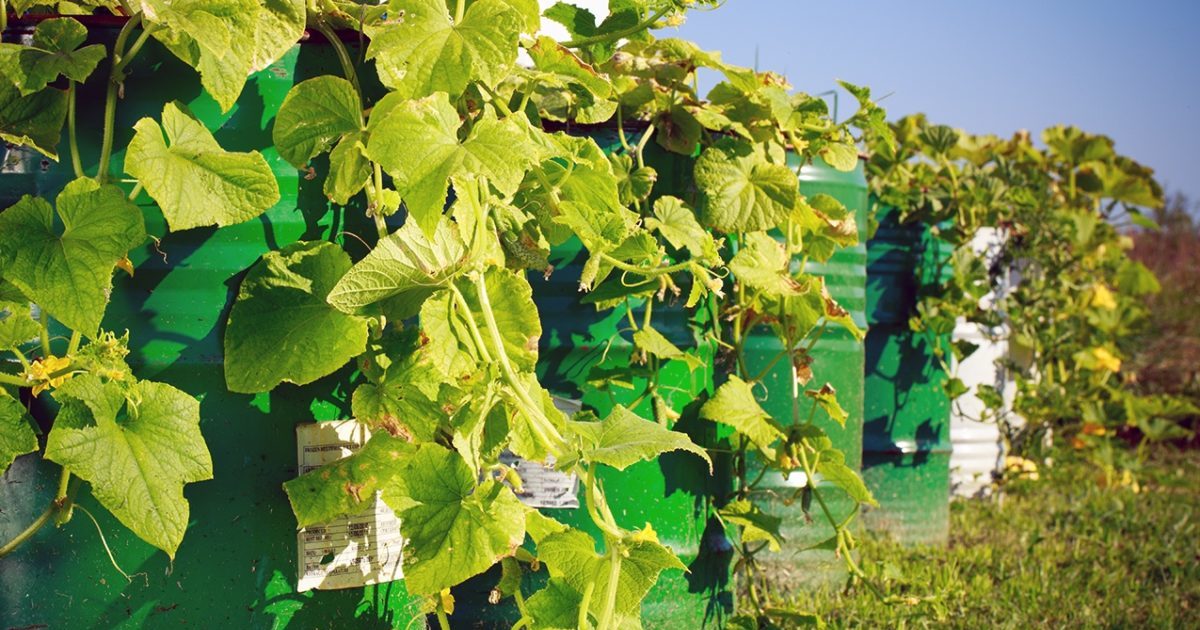 You may be interested in:
You may be interested in:Thus, two components make up the basis of success. This is the selection of a suitable variety for the existing conditions and the timely implementation of the necessary manipulations to form a bush. A step-by-step guide with a photo on how to pinch cucumbers in a greenhouse will help to understand the whole essence of the procedure.




 Armenian cucumber with melon flavor: description and characteristics, reviews
Armenian cucumber with melon flavor: description and characteristics, reviews Do-it-yourself vertical beds for cucumbers: schemes, photos
Do-it-yourself vertical beds for cucumbers: schemes, photos Hollow cucumbers: reasons for the appearance of hollow, what to do
Hollow cucumbers: reasons for the appearance of hollow, what to do Which manure is best for cucumbers: application, how to breed
Which manure is best for cucumbers: application, how to breed